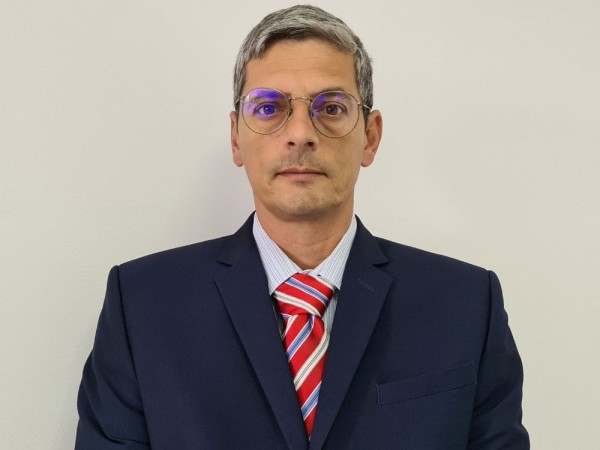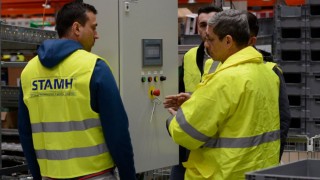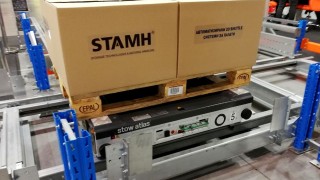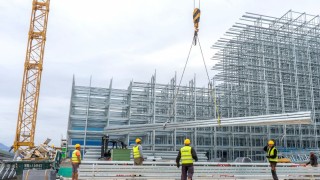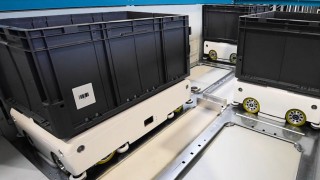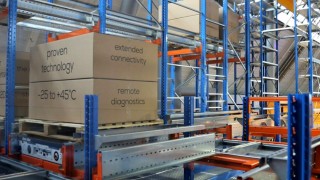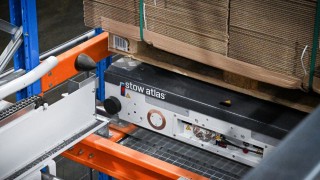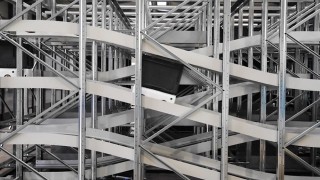The automation level of storage and picking processes in different warehouses in Romania is showing an upward trend. Therefore, STAMH Systems - an international supplier of automated storage solutions, has developed two new product lines for fully scalable storage systems, intended for automated storage and retrieval of pallets, respectively for the storage of boxes with small products: Atlas®2D and eScala®3D
Unlike 2021, the business context today is different. The increasing cost pressure on the supply chain overlaps with the need for new technology in the logistics and distribution centers. Even so, 2022 is being a profitable year for STAMH Systems in Romania. We are currently achieving a turnover, four times higher than in 2021 when it was over 3.2 million euros. Don’t miss this interview with Mr. Mihai David - STAMH Systems CEO.
Intermodal and logistics: How do you define and how do you find the logistics market in the first half of 2022 and how will it go? Do you expect increased demand before the end of this year?
Mihai David: The logistics market has proven stability and maturity during this year. Warehouses were equipped with new storage systems and the interest in automation is constantly growing. External pressure due to regional political events will be important. In our opinion, there will be more requests for reconfiguration and new racking equipment during the second half of 2022;
Intermodal and Logistic: From the perspective of the recently implemented projects, what did you notice different this year, compared to 2020 and 2021?
Mihai David: We see more investments in storage systems, and in dynamic intralogistics solutions. Companies are paying special attention to new fulfillment solutions, increasing the automation level of their picking and order assembly solution;
Intermodal and Logistics: Do problems in the supply chain affect you, especially talking about raw materials supply? Is second-hand equipment becoming more expensive?
Mihai David: Compared to the previous years, we felt the influence of the problems in the supply chain, mainly because of the increase in transportation costs, between 60% and 80%, but also an increase in raw materials costs. We had nothing to do but transfer this increase to the end client. That means an increase of 60% per pallet location in the warehouse;
Intermodal and Logistics: Did the increase in costs for the projects negotiated in 2021, and implemented in 2022, affected you and how did you manage to transfer it to your clients?
Mihai David: Taking into consideration our clients and suppliers, STAMH Systems apply a policy of total transparency and fair play. This is part of our company’s DNA. The increase in costs affected us only to the extent that the validity of our offers was much shorter, sometimes reaching a maximum of four working days. This way, we avoided possible price fluctuations, we would have to transfer to our business partners.
Intermodal and Logistics: What trends are visible in the market? What about the new versus second-hand equipment?
Mihai David: We cannot make an accurate assessment because we don't sell second-hand racks and racking systems. We can only make a detailed evaluation of second-hand racking systems from a technical point of view, considering every single reuse case. When we have one, we draw special attention to the fact that the total weight of the stored loads must be reduced by 20-30% compared to new storage systems. Over time, even without physical degradation and visible imperfections, we can appreciate and we are aware of the weaknesses of the already-used racking structures.
We are used to getting back to requests for second-hand systems only for some types of racking and storage equipment. We do express our point of view related to the loading capacity – following our transparency and fair play policies. Loading capacities must be reduced, and we certainly get involved in the periodic technical inspection of the used systems. We give our best to help new clients with the assessment of the possibility of reusing certain components in the new location or new possible configurations, installation, inspection, and services of the racking structures. But these evaluations are not our main activity. Everything that departs on engineering and goes into the area of empirical estimations, represents a bigger risk for the clients and we don’t recommend it.
Intermodal and Logistics: What is the automation level of the distribution centers in Romania? How does the market accept new automated storage systems from a regional point of view?
Mihai David: We have already launched 2 new production and engineering lines for scalable storage systems depending on the needed application: Atlas®2D and eScala®3D. They are intended for the fully automated storage of pallets, but also for the storage of boxes, trays, and cassettes with smaller products - for faster and more efficient picking and fulfillment activities.
Compared to the now existing automated solutions, which cannot be modified later and used to require new technologies, it will now be possible to add new equipment to the already implemented storage systems to adapt them to the increase in intensity in the warehouse or the distribution center.
Intermodal and Logistics: What are the plans of STAMH Systems in Romania for 2023?
Mihai David: We will have to focus on the development and implementation of 100 % automated storage systems. We started the year with the implementation of the new, fully automated storage system for pallets. They are aimed at warehouses, practically built and supported by the racking structure itself. These warehouses can operate at deep-freeze temperatures and ❄️ refrigeration temperature ranges. New warehouses and distribution centers will benefit from a strategic location, in the middle of the country - a logistic hub with immediate access to any region or country in Romania.
With the help of the new, 100% automatic solutions for the intensive storage and retrieval of pallets and the new eScala®3D storage system, we will help companies to increase their storage volumes and perfect intralogistics processes. The transition is easy, given the fact that the integrated STC software of this new system can be easily connected to the ERP and WMS software solutions of our partners.
Compared to other systems, storage and operational costs will be lower because these systems don’t need additional conveyors for intralogistics transportation. We are talking about two energy-efficient systems, scalable in terms of flow and capacity, which can serve different operational levels, with a quick "Return on Investment". The target industries for these systems are retail, online trade, pharmaceutical, FMCG, high-tech, automotive, fashion, chemical industry, and bottled beverage warehouses.


